Games
Tekken Tag Tournament
Published
1 year agoon
By
haak_blog
Tekken Tag Tournament (鉄拳タッグトーナメント Tekken Taggu Tōnamento, lit. Iron Fist Tag Tournament) is the fourth installment in the Tekken fighting game series and a spin-off of the main series, focusing on tag team battles. It is not canonical to the Tekken storyline. The game was originally available as an update kit for Tekken 3, running on the same System 12 arcade board. Tekken Tag Tournament was first released on arcades in 1999. It was ported to the PlayStation 2 home console in 2000 (released as a launch title outside Japan), though the PS2 version ran on an enhanced game engine with better graphics, which allowed the characters and stages to appear less angular and more detailed compared to how they used to look in the PS1 Tekken trilogy. The game combines most characters found in both Tekken 3 and Tekken 2.
The game received a sequel 12 years later, Tekken Tag Tournament 2, as well as a remastered for PlayStation 3 version entitled Tekken Tag Tournament HD.
Contents
- 1Story
- 2Gameplay
- 3Tekken Tag Tournament HD
- 4Moves
- 5Characters
- 5.1Returning characters
- 5.2New characters
- 5.3Cameos
- 5.4Unlockable characters
- 6Stages
- 7Music
- 8Trophies & Achievements
- 9Gallery
- 10Videos
- 11Trivia
- 12See Also
- 13References
- 14Navigation
Story
Tekken Tag Tournament is a non-canon game, having no storyline. According to Namco, it brought back the characters that did not return to Tekken 3: Baek Doo San, Bruce Irvin, Jun Kazama, and Kunimitsu. Their ages are unchanged from the previous Tekken games. It is more of a compilation of the Tekken series giving fans the opportunity to play as almost every character in the series up to that point, including many of those that had apparently been killed off in the main Tekken storyline. Of all the returning characters, Kazuya Mishima was the most heavily promoted, as he was featured prominently on the game’s cover art and promotional material.
Gameplay
Tekken Tag Tournament was notable for having the largest character roster in the series up to that point, boasting a total of 39 playable characters. 37 characters return from previous installments in the series, and two new characters, Tetsujin, a costume swap of Mokujin, and Unknown, the boss character in this game, were introduced. The most prominent feature is its tag system. A player selects two characters and may tag out between them to utilize special combos and throws. When in Team Battle mode, the fights are also tag fights unless there is one person left on a team where they will fight alone.
Certain pairs of characters, when selected as a tag team, have special intros, win poses, lose poses, Tag Throws and also Netsu ratings. The Netsu ratings affect gameplay, and whether a character ‘liked’, was indifferent to, or ‘disliked’ another, would result in faster or slower ability to gain a damage boost when their partner was damaged. The special intros, win and lose poses are more lore based, and do not directly map onto the Netsu system, though the Netsu system can give hints as to who will have a special interaction. Some special intros can only be seen if the characters are wearing certain costumes.
Tekken Tag Tournament included a mini-game called Tekken Bowl, that challenged the player to use a team of characters to play a bowling game. Depending on the player’s selected character, different attributes would be placed into effect in the mini-game. For example, Bryan Fury has a powerful roll due to his super strength, and he can use a targeting system to make more accurate shots because of his cybernetic enhancements. A physically weaker character like Julia Chang would have a much less powerful strike, but would be easier to control when placing the spin and amount of force on the ball. Yoshimitsu also has a targeting ability, which can control how straight the ball goes, making him one of the easiest to control characters of Tekken Bowl.
The soundtrack of Tekken Tag Tournament was also different from its predecessors, with strong techno and electro vibes.
Complementary pages:
- Tekken Tag Tournament/Netsu System
- Tag Throw
Tekken Tag Tournament HD
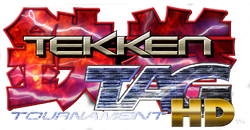
Tekken Tag Tournament HD is a high-definition update to the original game. It was included in Tekken Hybrid and showcased enhanced graphics and included trophies. This HD re-release, however, removes the “1 on 1” single-player and “1 on 1 VS” game modes from the PS2 version of Tekken Tag Tournament.
Moves
List of moves by character that can be performed in Tekken Tag Tournament.
See: Tekken Tag Tournament Moves
Characters
Returning characters

ALEX
(unlockable, costume swap of Roger)
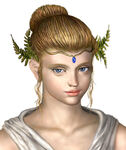
ANGEL
(unlockable, costume swap of Devil)
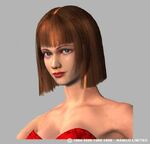
ANNA
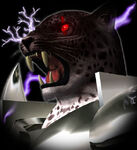
ARMOR KING
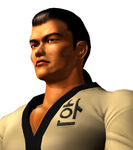
BAEK
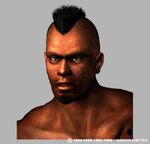
BRUCE
(unlockable)
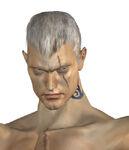
BRYAN
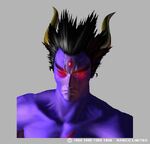
DEVIL
(unlockable)

EDDY
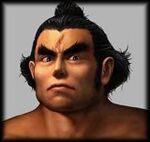
GANRYU
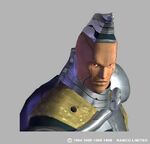
GUN JACK
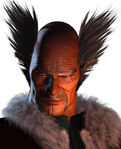
HEIHACHI
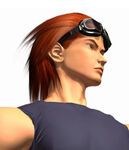
HWOARANG
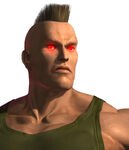
JACK-2
(unlockable)
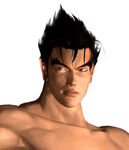
JIN
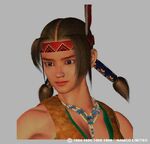
JULIA
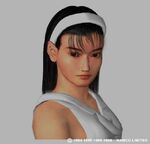
JUN
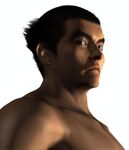
KAZUYA
(unlockable)
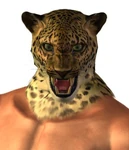
KING
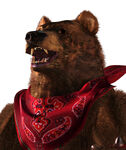
KUMA
(unlockable)
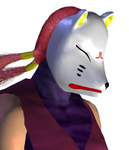
KUNIMITSU
(unlockable)
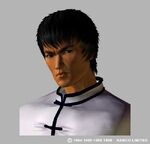
LAW
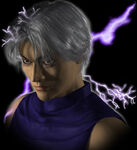
LEE
(unlockable)
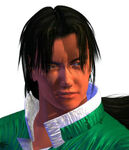
LEI
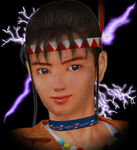
MICHELLE
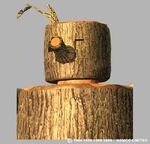
MOKUJIN
(unlockable, costume swap of Tetsujin)
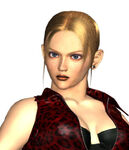
NINA
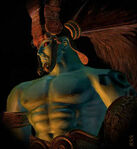
OGRE
(unlockable)
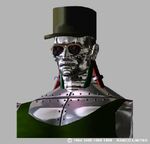
P.JACK
(unlockable)
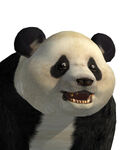
PANDA
(unlockable, costume swap of Kuma)

PAUL
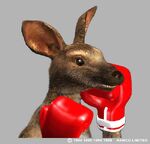
ROGER
(unlockable)
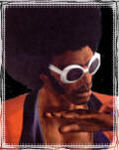
TIGER
(costume swap of Eddy)
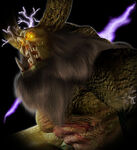
TRUE OGRE
(unlockable)
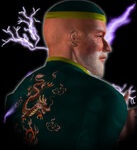
WANG
(unlockable)
XIAOYU
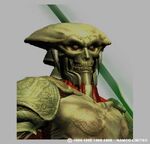
YOSHIMITSU
New characters
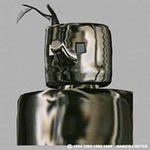
TETSUJIN
(unlockable)
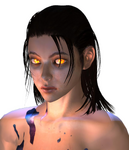
UNKNOWN
(final boss, unplayable in arcade version, unlockable in console version)
Cameos
- Crow – seeing in the background after a strike in Tekken Bowl
- Doctor Bosconovitch – seeing in the background in Tekken Bowl
Unlockable characters
Stages
| Character | Condition to unlock |
|---|---|
| Kunimitsu | Beating Story Mode one time with a character. |
| Bruce Irvin | Beating Story Mode two times with a different character. |
| Jack-2 | Beating Story Mode three times with a different character. |
| Lee Chaolan | Beating Story Mode four times with a different character. |
| Alex / Roger | Beating Story Mode five times with a different character. |
| Wang Jinrei | Beating Story Mode six times with a different character. |
| Kuma II / Panda | Beating Story Mode seven times with a different character. |
| Kazuya Mishima | Beating Story Mode eight times with a different character. |
| Ogre | Beating Story Mode nine times with a different character. |
| True Ogre | Beating Story Mode ten times with a different character. |
| Prototype Jack | Beating Story Mode eleven times with a different character. |
| Mokujin / Tetsujin | Beating Story Mode twelve times with a different character. |
| Angel / Devil | Beating Story Mode thirteen times with a different character. |
| Unknown | Beating Story Mode fourteen times with a different character. |

Eddy-A

Eddy-B

Heihachi

Hwoarang

Jin-A

Jin-B

King

Law-A

Law-B
Lei
Nin
Nina-B

Ogre

Paul

School-A

School-B

Unknown

Xiaoyu

Yoshimitsu-A

Yoshimitsu-B
Music
There were two soundtracks released for TTT, entitled Tekken Tag Tournament Original Soundtrack and Tekken Tag Tournament Direct Audio.
Trophies & Achievements
Main article: Tekken Tag Tournament/Trophies and Achievements
Gallery
Main article: Tekken Tag Tournament/Gallery
Videos
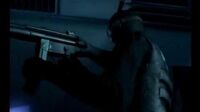
Tekken Tag Tournament Playstation 2 intro.
Intro.
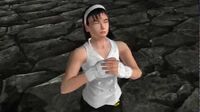
Tekken Tag Tournament HD Embu
Embu 1

Tekken Tag Tournament HD Embu 2
Embu 2 featuring the animal fighters of Tekken
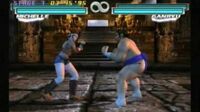
Tekken Tag Tournament – Michelle + Julia
A sample gameplay with Michelle Chang and Julia Chang.
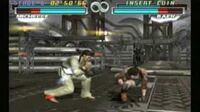
Tekken Tag Tournament – Julia + Michelle
Another sample gameplay with Julia Chang and Michelle Chang.
Trivia
- Tekken Tag Tournament is notable for these distinctions:
- It is the only game to feature a licensed car; in this case, the Honda S2000 which is driven by Lee Chaolan in the first arcade intro cutscene.
- It features the highest amount of participation by the Jack robots so far, being three.
- The first appearance of the Tekken Bowl Mode.
- The first Tekken game released for the PlayStation 2.
- The last game where all of the fighting arenas have no walls.
- The first game since the original Tekken to have the same stage music in every character’s ending. This is not the case with Unknown’s ending, however.
- The last game where the character falls into the “arched back” animation if KO’ed while standing since Tekken 2, instead of the standing KO’ed animation from Tekken 3.
- The first game in the series where players can preview characters’ moves in Practice Mode.
- This is also the first game where all of the characters’ moves are in their move lists.
- The last game where characters perform their win poses between rounds.
- The first game where the fighters can jump up immediately after hitting the ground.
- The last game where Jin uses Mishima Style Fighting Karate.
- The last game where screaming no longer echoes when a character is KO’d.
- The first game where health meters no longer load up before a fight begins.
- The only game where Mokujin is a costume swap of another character.
- The first game to feature stages with spectators or background people who are not watching the fight.
- In this game, all Tekken 3 characters get an alternate version/color scheme of their Player 1 and Player 2 outfits.
- Marshall Law is the only character missing from this game that would later return in the canonical games.
- Doctor Bosconovitch and Crow are missing as well, but neither would return in a canonical game. Doctor Bosconovitch would make his return in Tekken Tag Tournament 2.
- The differences between arcade and home versions are the stages’ backgrounds and the characters’ facial expressions during a battle:
- The arcade version remains graphically similar to Tekken 3, as both Tekken 3 and Tekken Tag Tournament run on the Namco System 12 arcade hardware.
- The home version (starting from PlayStation 2) marks the first Tekken game to have characters with facial expressions during a battle, fully modeled stages, animated environments, and having crowds on certain stages, which later apply to post-PlayStation Classic trilogy Tekken games.
- When fighting True Ogre, the stage background in the home version is no longer blank like in the arcade version.
- Unknown is the only character in the game to have a CGI ending, all other characters use the in-game graphics.
- The chain throw combos seen in King’s ending were later installed as an actual chain throw combo in Tekken 5, although all of the moves were based upon existing throws in Tekken Tag.
- The non-canonical premise of the game may have been inspired by SNK’s The King of Fighters ’98, which similarly ignored series canon for a “dream match” that brought back deceased and obsolete characters.
- Characters like Alex, Angel, Forest Law, Jun Kazama, Michelle Chang, Ogre, Prototype Jack, True Ogre, and Unknown, would not be playable again until the game’s sequel, Tekken Tag Tournament 2.
- After this game, Anna Williams, Armor King (replaced by a second Armor King), Baek Doo San, Bruce Irvin, Ganryu, Mokujin (who is replaced by Combot in Tekken 4) and Wang Jinrei would not appear again until Tekken 5. Roger does not make any more playable appearances after this game and is replaced by Roger Jr. in Tekken 5.
- If the player pairs up Kazuya Mishima and Devil on the same team, they are able to morph into one another instead of tagging out of the fight.
- Many characters have special before-battle and losing poses if they are paired up with certain characters.
- For example, Law and Lei lay down on the floor in a comical fashion if they lose.
- Nina kicks Bryan in the crotch with them both getting into their fighting stances immediately afterward if they lose a match.
- In before-battle poses, some characters will do things with/to their partner occasionally depending on the leader.[1]
- For example, when Paul and Kuma are paired, whomever the leader is will do their special attack to the other (Kuma will do his Salmon Hunter move on Paul, and Paul will do his Phoenix Smasher against Kuma).
- Heihachi will turn Lee over his knee and spank him if paired together.
- Ling Xiaoyu is the only character in the game to have two endings. It is viewable by beating Arcade mode in her school girl outfit. Xiaoyu also has the most outfits with an additional secret green/orange costume, only obtainable by selecting her with a random select.
- There are no replays after every round, but after Arcade Mode has been completed, the player will be shown replays from the last round of every match while the word “replay” flashes on the top left of the screen rather than the top right. However, in Tekken Bowl, the word flashes on the bottom left except when a super strike occurs.
- The stages in this game are the exact same locations from Tekken 3, being set in a different time of day. For example, Lei Wulong’s Hong Kong Street stage took place in the daytime in Tekken 3, but in this game, it takes place at nighttime.
- Although he is not playable, Doctor Bosconovitch appears as a spectator in Tekken Bowl. He can be “KO’d” by throwing the ball away from the lane towards him, which counts as a miss.
- In Tekken Bowl, pressing the X button when the shot power bar is at its absolute maximum will result in an “Over Charge.” The character will hang onto the ball when throwing it, sending them sliding down the lane and crashing into the pins in a comedic fashion. This will count as a miss, and the message “Caution: Please do not try this at home” will display.
- While Tekken Tag Tournament is non-canon, it looks as though it would have taken place during the same time as Tekken 3 since all of the characters that were in that game’s roster, as well as the fighters who last appeared and debuted in Tekken 2 but did not return in 3, have not aged yet.
- The European instruction manual showing Jin’s biography incorrectly has a picture of Kazuya instead of Jin.[citation needed]
- This game marked the only appearance on the PlayStation 2 for Kunimitsu, Jack-2, Michelle, Gun Jack, Forest Law, Angel, Ogre, Armor King, Jun Kazama, Devil, Roger and Unknown. Some of these characters do make a cameo in character prologues and endings in other PlayStation 2 games, however.
- Tekken Tag Tournament is one of the two games in the series to be released with an alternate cover. The Japanese and PAL covers shows a Kazuya’s face alone, while the North American cover shows Kazuya as well as Bryan, Ganryu, Heihachi, Nina, Gun Jack, and Michelle behind him.
- According to Harada, Sega had attempted to make negotiations with Namco to port Tekken Tag Tournament to the Dreamcast, offering a Virtua Fighter character of their choice for free in the game, but the offer was declined.[2]
- Tiger Jackson is the only character whose name is not said by the announcer
- The game originally had a Turbo Mode that was only released in certain events though certain attacks would also launch an opponent high; similar to Tekken 2′s Sky Mode. Oddly, all characters would exclusively use Anna’s intro and win poses.
- While there is no traditional stage selection, the player is able to select a stage for Practice Mode by hovering over the option on the main menu, holding L2, and tapping R2 up to twenty times depending on the desired stage.
You may like
Games
Discover TR2 Games – Everything You Should Know About It
Published
4 months agoon
January 6, 2024By
Nouman SEO
Explore the fascinating world of TR2 Games! Discover TR2 Games – Everything You Should Know About It, from its inception to the latest trends. Uncover the secrets, innovations, and community behind this gaming phenomenon.
Introduction
Embark on a journey into the gaming universe as we unravel the intricacies of TR2 Games. Whether you’re a seasoned gamer or just diving into the gaming scene, this article is your comprehensive guide to Discover TR2 Games – Everything You Should Know About It.
The Evolution of TR2 Games
Delve into the rich history of TR2 Games, tracing its evolution from a niche platform to a global gaming sensation. Explore the milestones, innovations, and the dedicated community that has shaped its trajectory.
The Core Features of TR2 Games
Uncover the distinctive features that set TR2 Games apart in the gaming landscape. From cutting-edge graphics to immersive gameplay, Discover TR2 Games – Everything You Should Know About It, highlighting the elements that captivate gamers worldwide.
TR2 Games Community: A Global Phenomenon
Immerse yourself in the vibrant community surrounding TR2 Games. Explore how players worldwide connect, share experiences, and contribute to the ever-expanding universe of TR2 Games.
Trailblazing Innovations in TR2 Games
Witness the groundbreaking innovations that define TR2 Games. From revolutionary gameplay mechanics to pioneering technologies, Discover TR2 Games – Everything You Should Know About It, showcasing how it continues to push the boundaries of gaming.
Exploring TR2 Games Genres
Dive into the diverse genres offered by TR2 Games, catering to a wide spectrum of gaming preferences. Whether you’re a fan of action, strategy, or simulation, TR2 Games has something for everyone.
Behind the Scenes: Development Insights
Gain exclusive insights into the development process of TR2 Games. Learn about the creative minds, challenges faced, and the dedication that goes into crafting each gaming masterpiece.
The Unveiling of TR2 Games – Everything You Should Know About It
In this section, we will provide a detailed overview of the key aspects covered so far, summarizing the essence of TR2 Games for readers seeking a quick snapshot.
FAQs about TR2 Games
What sets TR2 Games apart from other gaming platforms?
Discover TR2 Games – Everything You Should Know About It, as we unravel the unique features that make it stand out in the crowded gaming industry.
How can I join the TR2 Games community?
Explore the steps to become a part of the thriving TR2 Games community and connect with fellow gamers worldwide.
Are there any upcoming releases from TR2 Games?
Stay ahead of the curve by learning about the latest game releases and updates from TR2 Games, ensuring you never miss out on the gaming excitement.
Can I contribute to the development of TR2 Games?
Learn how passionate gamers can contribute to the growth and development of TR2 Games, fostering a sense of community involvement.
Is TR2 Games suitable for all age groups?
Discover the age inclusivity of TR2 Games, ensuring a gaming experience that caters to a diverse audience, from children to adults.
How can I troubleshoot common issues in TR2 Games?
Explore troubleshooting tips and solutions for common issues encountered in TR2 Games, ensuring a smooth and enjoyable gaming experience.
Conclusion
In conclusion, Discover TR2 Games – Everything You Should Know About It offers a comprehensive insight into the world of TR2 Games. From its inception to the thriving community and innovative features, TR2 Games continues to redefine the gaming landscape.
Games
Unlocking Success: A Comprehensive Guide to Becoming NFC West Champions
Published
6 months agoon
November 6, 2023By
rocklord
Learn how to become NFC West champions with expert guidance. This comprehensive guide offers insights, strategies, and tips for achieving the ultimate victory in the NFC West.
Introduction
The NFC West has long been a powerhouse in the world of American football. With fierce competition and talented teams, earning the title of NFC West champions is no small feat. Whether you’re a devoted fan, a player, or a coach, the desire to conquer this prestigious division is a common goal. In this article, we will explore what it takes to become NFC West champions. We will provide you with a roadmap to success, valuable insights, and a comprehensive understanding of the NFC West’s competitive landscape.
Now, let’s delve into each section to uncover the secrets of achieving NFC West greatness.
The Importance of NFC West Championships
Achieving the title of NFC West champions is not just about prestige; it comes with various benefits. A divisional championship secures your place in the playoffs, offering the opportunity to compete for the Super Bowl, the ultimate goal for any NFL team. Additionally, it boosts team morale, fan support, and overall recognition. We’ll explore the significance of this accomplishment in more detail.
Analyzing the Top Competitors
To become champions, you must first understand your competition. This section will provide an in-depth analysis of the current top teams in the NFC West. We’ll look at their strengths, weaknesses, and recent performance to help you strategize effectively.
Building a Strong Roster

Your team’s success heavily relies on the players you have. We’ll discuss the key positions to focus on and offer advice on recruiting, drafting, and developing a roster that can contend for the NFC West championship.
Mastering the Playbook
A well-crafted playbook is essential for success. In this section, we’ll explore the intricacies of developing an effective offensive and defensive playbook, including trick plays, formations, and strategies to keep your opponents guessing.
Enhancing Defensive Strategies
Defense wins championships, and we’ll guide you through proven defensive strategies that have worked for past NFC West champions. Learn how to shut down the opposition and make your defense a formidable force.
Excelling in Offense
A strong offense is equally important, and this section will cover various offensive tactics, passing and running plays, and how to capitalize on your team’s strengths to score consistently.
Effective Coaching Techniques
Behind every successful team is a great coach. We’ll delve into coaching techniques that have helped teams reach the pinnacle of the NFC West and provide insights into motivating and leading your players.
Mental Toughness and Resilience
Champion teams have unwavering mental strength. We’ll discuss how to build a resilient mindset, handle adversity, and maintain focus, which is crucial for success in the competitive NFC West.
Preparing for the Playoffs

Being NFC West champions means preparing for the playoffs. We’ll guide you on how to plan, strategize, and perform under pressure as you aim for the Super Bowl.
Success Stories: Learning from Past Champions
Learn from the successes of past NFC West champions. This section will provide case studies and insights from legendary teams and players, offering valuable lessons and inspiration for your journey.
NFC West Champions: A Journey to Victory
When it comes to football in the NFC West, there’s no denying that it’s one of the most competitive divisions in the NFL. The NFC West has produced some of the league’s greatest teams and players over the years, and the battle for supremacy in this division is a spectacle in itself. In this article, we will take you on a journey through the history of the NFC West champions, from their early days to their recent successes. Get ready to dive into the thrilling world of NFC West football.
The Pioneers: San Francisco 49ers
A Legacy of Greatness
The San Francisco 49ers are undoubtedly one of the most iconic teams in NFL history. Founded in 1946, the 49ers have a rich legacy filled with triumphs, legendary players, and unforgettable moments. The team has claimed multiple NFC West titles over the years, and their journey to greatness is a story worth telling.
From their first NFC West championship in 1970 to their dominant run in the 1980s and 1990s, the 49ers have left an indelible mark on the division. Hall of Fame quarterbacks like Joe Montana and Steve Young led the team to numerous victories, solidifying the 49ers’ status as a football powerhouse.
Recent Success
In recent years, the 49ers have continued to be a force to be reckoned with in the NFC West. Under the leadership of head coach Kyle Shanahan and with a talented roster, they’ve clinched NFC West titles and made deep playoff runs. Their relentless pursuit of excellence on the field keeps them at the forefront of the division’s competition.
Seattle Seahawks: A Modern Dynasty
Rising to Prominence
The Seattle Seahawks burst onto the NFC West scene with a vengeance. Founded in 1976, they initially struggled to find their footing in the division. However, in the early 2010s, the Seahawks, led by quarterback Russell Wilson and the “Legion of Boom” defense, began their ascent to glory.
Their “12th Man” fan base at CenturyLink Field created an electrifying atmosphere that few teams could match. This support played a crucial role in the Seahawks’ NFC West dominance, which included a Super Bowl victory in 2013.
Sustaining Success
The Seahawks have managed to sustain their success and have been consistent contenders in the NFC West. Coach Pete Carroll’s innovative approach to the game and their remarkable home-field advantage have kept the team competitive. In recent years, they’ve continued to compete at a high level, making it clear that they are here to stay in the NFC West race.
The Arizona Cardinals: An Upward Trajectory
A Team on the Rise
The Arizona Cardinals have had their fair share of ups and downs in the NFC West. Founded in 1898, they have undergone various transformations and relocations before settling in Arizona. While they faced challenges in establishing dominance in the division, recent years have seen a resurgence of the Cardinals.
With star quarterback Kyler Murray at the helm and the guidance of head coach Kliff Kingsbury, the Cardinals are on an upward trajectory. They are a team to watch in the NFC West, and their journey to the top of the division is gaining momentum.
The Los Angeles Rams: A Return to Glory

A Historic Franchise
The Los Angeles Rams have a storied history in the NFL, with origins dating back to 1936. While the Rams have moved between cities, they’ve consistently been a part of the NFC West landscape. They have had periods of both dominance and struggle within the division.
In recent years, the Rams have experienced a resurgence, thanks to the arrival of head coach Sean McVay and star defensive tackle Aaron Donald. Their dynamic play has propelled them to NFC West championships and Super Bowl appearances, demonstrating their return to glory.
Unlocking the Secrets of NFC West Champions
The NFC West has always been a competitive and intriguing division in the NFL. With a rich history, passionate fan base, and some of the most talented players in the league, it’s no wonder that becoming an NFC West champion is a significant accomplishment. In this article, we will delve deep into the world of NFC West champions, exploring their strategies, star players, and what makes this division stand out from the rest.
The History of the NFC West
The NFC West division was established in 1970 when the NFL merged with the AFL. It initially consisted of four teams: the San Francisco 49ers, Los Angeles Rams, Atlanta Falcons, and New Orleans Saints. Over the years, the division underwent several changes, but its current lineup includes the San Francisco 49ers, Los Angeles Rams, Seattle Seahawks, and Arizona Cardinals.
Throughout its history, the NFC West has seen remarkable achievements. The San Francisco 49ers, under legendary coach Bill Walsh, dominated the 1980s, winning multiple Super Bowls. The division has also been home to iconic players like Jerry Rice, Steve Young, and Joe Montana.
The Star Players
The NFC West has a long tradition of producing superstar athletes. Players like Russell Wilson, Larry Fitzgerald, and Aaron Donald have left a significant mark on the division. They have not only been successful within their respective teams but have also contributed to the division’s reputation as a powerhouse of talent.
Winning Strategies
To become an NFC West champion, a team needs more than just individual talent; it requires a solid game plan. Strategies like a strong defensive line, versatile offensive schemes, and dynamic coaching have been the keys to success. Coaches like Pete Carroll and Sean McVay have been instrumental in shaping the division’s strategies.
Memorable Moments
The NFC West has witnessed numerous unforgettable moments. From “The Catch” by Dwight Clark in 1982 to the “Beast Quake” run by Marshawn Lynch in 2010, these moments have become part of NFL folklore. The division’s games have a reputation for delivering nail-biting excitement and unforgettable plays.
Rivalries in the NFC West
Rivalries have always been a significant aspect of sports. In the NFC West champions, rivalries run deep, with the most notable being the San Francisco 49ers vs. the Seattle Seahawks. These matchups are not just games; they are battles that ignite the passion of fans and players alike.
The Impact on the NFL

The NFC West’s influence extends beyond the division itself. Its innovative strategies and competitive nature have pushed other divisions to up their game. The division has set a high standard for excellence and has inspired other teams to raise their performance levels.
Future Prospects
The NFC West continues to be a force to be reckoned with. As young and talented players emerge, the division’s future looks bright. Fans can expect to witness more thrilling games and intense rivalries in the years to come.
Fan Engagement
The NFC West boasts some of the most passionate and dedicated fans in the NFL. The energy and enthusiasm they bring to the games create an electrifying atmosphere. Fan engagement and support play a vital role in motivating the teams.
The Road to Victory
Becoming an NFC West champion is a journey filled with challenges and triumphs. The road to victory requires perseverance, hard work, and a strong sense of teamwork. Only those who can navigate this path emerge as champions.
Frequently Asked Questions
- What is NFC West?
- NFC West stands for National Football Conference West. It is a division within the National Football League (NFL), consisting of four teams: the Arizona Cardinals, Los Angeles Rams, San Francisco 49ers, and Seattle Seahawks.
- How does one qualify for the playoffs as NFC West champions?
- By winning the NFC West division, a team automatically qualifies for the NFL playoffs. They secure a spot in the postseason.
- What are some key players to watch in the NFC West?
- The NFC West has a history of producing top-tier talent. Keep an eye on stars like Russell Wilson, Kyler Murray, Aaron Donald, and George Kittle.
- Is there a specific playbook that works best for NFC West success?
- While there is no one-size-fits-all playbook, a balanced approach that caters to your team’s strengths is essential. Adaptability is key.
- How important is home-field advantage in the NFC West?
- Home-field advantage can be significant in this division, given the passionate fan bases and challenging weather conditions. Winning at home is often crucial.
- How can mental toughness be developed in athletes?
- Mental toughness can be nurtured through training, sports psychology, and the guidance of experienced coaches.
- What are some classic NFC West rivalry games?
- Classic NFC West rivalries include matchups like the San Francisco 49ers vs. Seattle Seahawks and the Arizona Cardinals vs. Los Angeles Rams.
- What’s the most memorable moment in NFC West history?
- There have been many memorable moments, but “The Tip” by Richard Sherman in the 2013 NFC Championship Game stands out as an iconic play.
- How can a team bounce back from a tough loss and stay focused on the championship?
- Resilience and learning from losses are key. Teams should use losses as motivation and learn from their mistakes.
- Who is the most successful NFC West champion of all time?
- The San Francisco 49ers have been the most successful team in the NFC West’s history, with multiple Super Bowl victories.
Conclusion - In conclusion, the NFC West champions represent the pinnacle of excellence in the NFL. With a rich history, a lineup of star players, winning strategies, and passionate fan engagement, this division continues to be a source of inspiration for football enthusiasts. As we look ahead, the future of the NFC West promises even more excitement and memorable moments. So, whether you’re a die-hard fan or a casual observer, the NFC West will always have something special to offer in the world of football.
- The San Francisco 49ers have been the most successful team in the NFC West’s history, with multiple Super Bowl victories.
Games
Unblocked Games 66 EZ – Play Whimsical Games Anywhere In The World
Published
7 months agoon
September 21, 2023By
rocklord
Unblocked Games 66 EZ enthusiasts are everywhere in the world, from Mario Cart to Overwatch and other outstanding and engaging games, players have a variety of options to choose from and play.
But when it comes to online gaming there are very few websites that provide a good collection of games that can cater to the need of multiple players’ interests.
Although, if a website has a good games collection, being it not available in your region might be a big problem. But there is a solution to every problem.
Here in this content, you will discover Unblocked Games 66 EZ – a website for all your gaming needs.
Explore The Thrills Of Unblocked Games 66 EZ
Unblocked Games 66 EZ is a website that provides a collection of online games that can be played in school or work environments where gaming websites may be restricted or blocked. The term “unblocked” refers to the fact that the games available on the platform are accessible.
The website provides a vast range of games across multiple genres, including action, puzzles, sports, and more. It aims to offer an enjoyable gaming experience for users who want to play the games during their leisure hours or when they have some downtime at school or work and want to immerse themselves into an action world, using.
Reasons Unblocked Games 66 EZ Is A Perfect Website To Play Games

There are many reasons why one should play games through Unblocked Games 66 EZ, some of which are mentioned below.
| Access in restricted environments | Variety of games | Convenience and ease of use |
| ● The primary benefit of using the website is that it allows you to access and play games in a strict environment where the gaming website usually is blocked or restricted.● This can include schools, colleges, or offices that have imposed restrictions on gaming content.● This website provides a workaround to enjoy the favorite games of players during their breaks. | ● Unblocked Games 66 EZ also has a wide selection of games in different genres and provides options for various preferences and interests.● Whether you want to play action-packed adventures, mind-simulating puzzles, strategic challenges, or casual sports games, the platform aims to cater to diverse gaming tastes. | ● The website is designed to be user-friendly with a simple and intuitive interface.● All games are easily accessible, and you can start playing with just a few clicks.● The players also don’t have to download or install anything. And this makes Unblocked Games 66 EZ a quick and hassle-free option to enjoy outstanding games on the go. |
Explore Elated Genres To Play At Unblocked Games 66 EZ
The website offers a wide range of game genres to cater needs of multiple players with different interests. Some popular genres of games available on the website are;
Action: The games mostly involve fast-paced gameplay, combat, and multiple challenges that need quick reflexes and decision-making.
Adventure: This genre has games that are focused on exploration, puzzle-solving, and storytelling. They feature immersive narratives and allow players to embark on exciting quests or journeys.
Puzzle: Puzzle games need problem-solving skills and logical thinking. They mostly include manipulating objects, solving riddles, or competing patterns to progress through levels.
Strategy: Strategy games are focused on tactical planning and decision-making. Players typically manage resources, build structures, and lead armies or civilizations to progress the story.
Sports: This genre of games simulates various sports and allows the players to participate in the virtual version of activities including tennis, basketball, football, and more.
Racing: Racing games center around high-sped competition, where Racing games center around high-speed competition, where players control vehicles and strive to win races, beat lap times, or complete challenges on different tracks.
Arcade: These games are usually fast-paced, straightforward, and easy to pick up and usually feature simple controls, high scores, and quick sessions.
Platform: Platform games involve navigating through levels that are filled usually with obstacles enemies, and puzzles. The goal in these games is to reach the end of the level or defeat the villain.
Shooting: Shooting games are centered on combat and precision shooting. The players control a character or vehicle and engage in battles against their enemies
Simulation: These games are focused on replicating a real-life activity or experience. This may include simulation of driving, flying, managing cities, or running a business.
Why Unblocked Games 66 EZ Not Working?

Although the website is designed to work in a restricted environment still there are various reasons that it might not work in your device or area you are in. If you are experiencing any errors while operating the website for games, then you might have the following problems.
1. Network restrictions
There is a chance that the website is blocked or restricted by the network you are using. There are several schools, colleges, workplaces, or even public networks that often have filters or firewalls to prevent access to gaming websites or specific categories of content.
2. Server or website maintenance
You might face the issue because the website might be down temporarily or exercising any server issues. This can happen occasionally and the administrator of the website might be working to resolve the problem.
3. Website blocked by your browser
Also, it is possible that your web browser might have some setting or extension to block certain websites. For this, you can check browser settings or any installed extensions to ensure that they are not blocking the gaming website.
4. Domain changes or errors
Sometimes website changes their domain names or URLs which temporarily leads to unavailability. You can double-check that you have the correct URL for Unblocked Games 66 WZ.
5. Legal or copyright issues
Website offering unblocked gamest may face challenges or copyright issues sometimes which leads to their shutdown or inaccessibility.
How To Access Unblocked Games 66 EZ?
What to do if you cannot access Unblocked Games 66 EZ? Well! If you are facing temporary issues then it can be solved by the administrator of the website. But if the issues are related to geo-blocking and network interruptions, then there are some solutions that you can try.
Use a different network
If you are trying to access the website from a school, college, or workplace network where gaming websites are blocked, then you can try using a different network. This can be your home network or public network that doesn’t have the same restrictions.
Utilize a VPN service
A VPN is a solution for too many problems when it comes to blocked content. With a VPN service, you can easily bypass network restrictions by routing the internet connection through a different server in a different location. By doing this it can make it appear as if you are accessing the website from a different location, such as another country.
Check for alternative URLs or mirrors
If the website’s domain has been changed or is experiencing any issues then there might be alternative or mirror sites available. You can look for the official announcements or forum related to the Unblocked Games 66 EZ where you can find information about accessing a game.
Use mobile data or personal hotspot
If you have mobile data on your device or create a personal hotspot, then you can easily connect your device to it and access the website through your mobile network.
Look for similar websites
You can also look for similar websites that provide the same collection of games and similar services. Search online or explore the forums and other platforms where you can get information about reasonable alternatives.
Get Access To Unblocked Games 66 EZ With FastestVPN
VPN or virtual private network is the best way to access Unblocked Games 66 EZ. With a good VPN service provider, you easily connect and have access to your favorite games on the website. There are multiple benefits of using a VPN to access the website even though it is unrestricted in your location, it might help you with other things.
So, if you want to enjoy a great gaming experience at Unblocked Games 66 EZ, then using the VPN is the best option.
There are many options available for VPNs to use but if you are looking for something authentic and reliable then FastestVPN is the perfect choice for it. Through this VPN you can enjoy the best gaming experience that you might not experience because and have access to any game that is blocked in your region.
With FastestVPN, everything will be secure and private. You don’t have to announce your identity to anyone while playing games on the Unblocked Games 66 EZ.
Enhance Your Gaming Experience At Unblocked Games 66 EZ With The FastestVPN

The FastestVPN features and facilities are there that are helpful for its users and make it convenient for them to use and browse Unblocked Games 66 EZ.
Compatibility With 20+ Devices
You can easily use FastestVPN with 20+ devices including Android, iPhone, Windows, Xbox, PS4, Roku, and more. You can easily play games at Unblocked Games 66 EZ on any device you have.
DNS Leak Protection
It sends the IP requests outside the VPN tunnel, exposing your IP. FastestVPN makes sure high security with DNS leak protection features that is built-in so you can play Unblocked Games 66 EZ without any problem.
Internet Kill Switch
An internet kill switch helps in preventing the identity of the user which means that if you are playing Unblocked Games 66 EZ no one will identify you.
Multiple Protocols
FastestVPN has different protocols, for example, OpenVPN, WireGaurd, IPSec, IKEv2, OpenConnect, L2TP, and more which makes it easy to play games without any problem.
Ad Blocker
The VPN gives you access to an Ad-blocker which means that you will be allowed to play your favorite at the website Unblocked Games 66 EZ.
Wi-Fi Security
If you are playing games through Unlocked Games 66 EZ on a public WIFI, then FastestVPN will provide you with an extremely secure connection.
AES 256-Bit Encryption
The FastestVPN protects the data you will upload on Unblocked Games 66 EZ whether it is your email id, username, password, or anything else.
Access Unblocked Games 66 EZ Anywhere
It is already mentioned that FastestVPN will help you access Unblocked Games 66 EZ anywhere in the world.
Anti-Malware Protection
This feature is best to protect your device, connection, and data with high-end malware prevention and you are allowed to browse the Unblocked Games 66 EZ securely.
Conclusion
So, it becomes much easier to play games at Unblocked Games 66 EZ with FastestVPN. With multiple genres to choose from, you can play whatever you want anonymously. FastestVPN hosted a lot of benefits for its users and became a convenient option to choose from.
Trending
-

 Celebrity1 year ago
Celebrity1 year agoDavid Bolno: A profile in philanthropy
-

 News2 years ago
News2 years ago8 Birthday Gift Ideas for Friends or Family Who ‘Have Everything
-

 Tech2 years ago
Tech2 years ago5 Common Acer Laptop Problems
-

 News2 years ago
News2 years agosit outlook
-

 News2 years ago
News2 years agoplex online login
-

 Entertainment2 years ago
Entertainment2 years agoThe 10 Best Subway Sandwiches, Ranked
-

 Games2 years ago
Games2 years agoPoki Games: Play free number 1online games
-
News2 years ago
Free iPhone 12 from the Government
